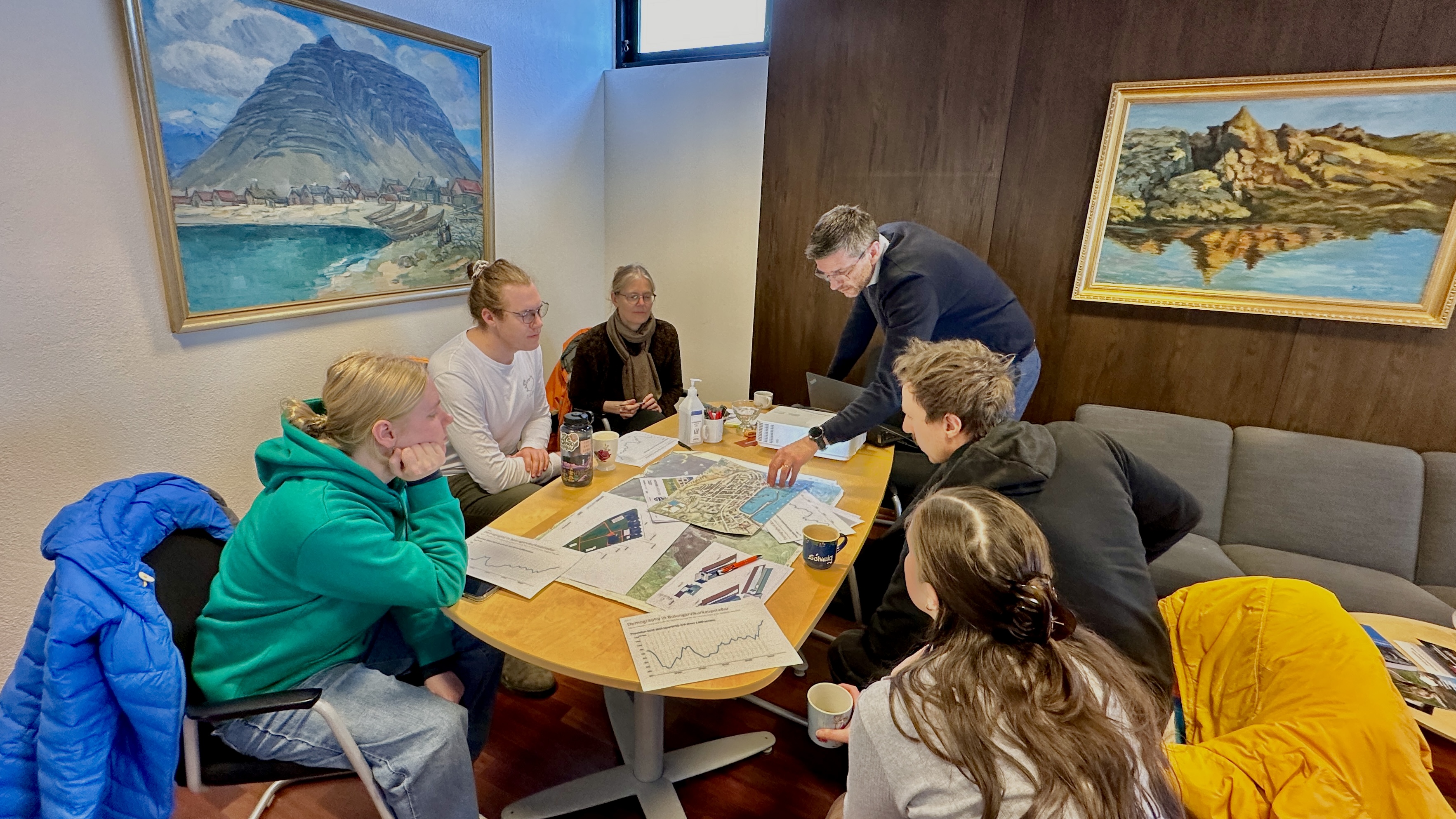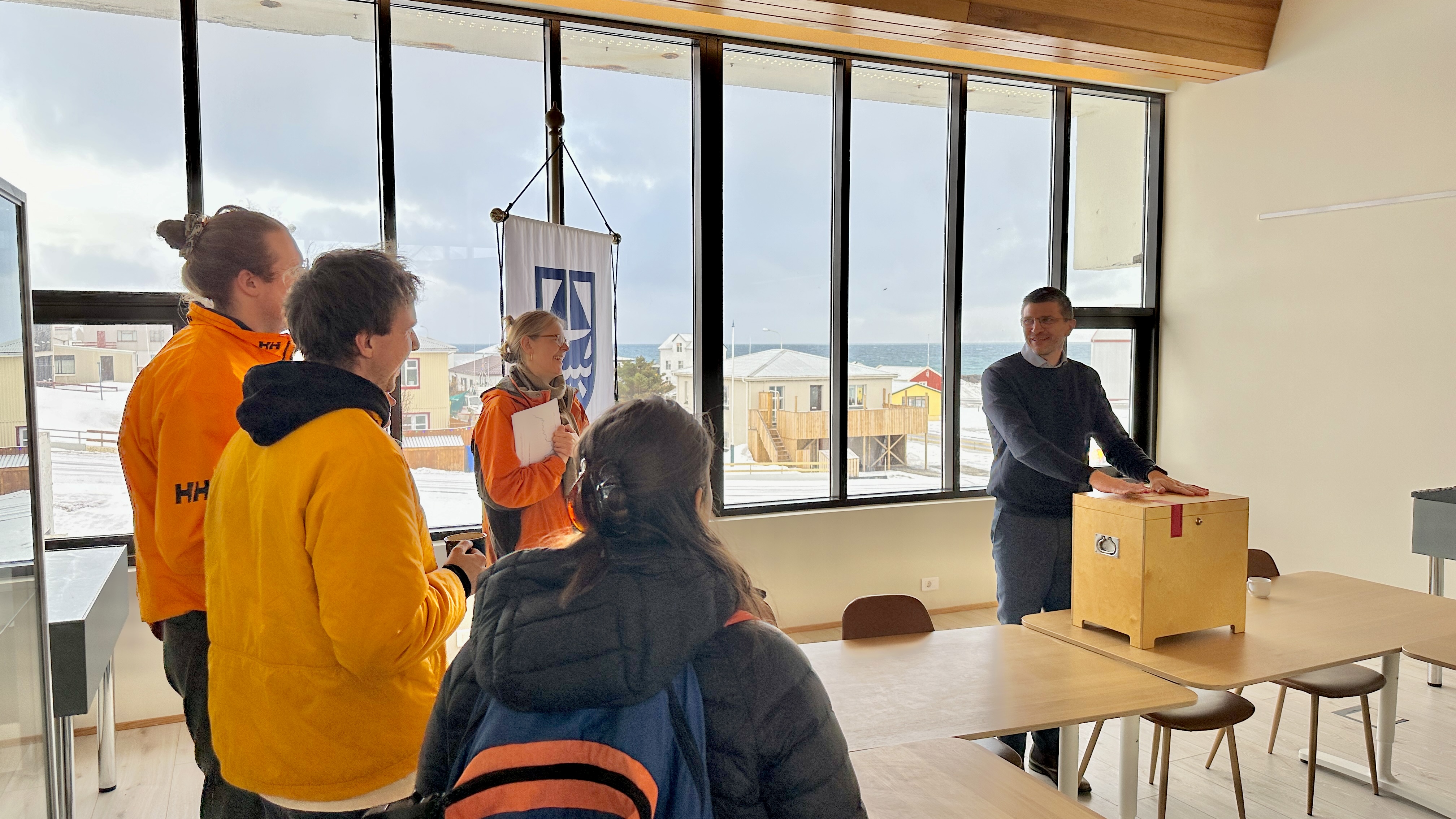UW students visit mayor of Bolungarvík
Recently, students taking the “Migration and Population Development” course at UW got the chance to have a meeting with Jón Páll, the mayor of Bolungarvík. Bolungarvík is a coastal town, 15 minutes away from Ísafjörður. They were shown around the municipality building and got to peek into the office of the Natural Science Institute of the Westfjords, Blámi, and the Research Centre of the University of Iceland housed in the same building. After the tour, they had an interesting talk in the mayor's office about the town’s population development and investments, and got an informative presentation. Jón Páll introduced them to a project called “Bolungarvík 1000+” which aimed to increase the population of Bolungarvík from 950 inhabitants to over 1000. It was a response to pressure that was put on small communities with under 1000 inhabitants to merge. Jón Páll said that Bolungarvík is a very independent town, and they didn’t consider the option to merge with another municipality and decided instead to increase the population to over 1000 people. They were successful and on April 13th 2023 the population reached 1000 inhabitants. He said they did this by investing and putting effort into three big pillars.
One of the pillars was housing for residents of Bolungarvík. To increase housing options, the municipality invested in new building plots for residential housing. “You can’t increase population without increasing new housing, even though this was a risk at that time since there weren’t many people asking for building plots” - said Jón Páll. Moving on to the second pillar, Jón Páll explained how investing in infrastructure is very important and mentioned as an example that with added population, there is a need to expand the kindergarten, and build a larger water reservoir. He also talked about the importance of supporting innovation and new companies. The third pillar is investing in the private sector. Jón Páll said that the economy of Bolungarvík was built up based on its proximity to fishing grounds, however this has changed in the last 10 years. The change started with milk production by a company called Arna, and later, salmon farming started in Bolungarvík. Recently tourism has been increasing in the region and is currently expanding. These three factors have contributed to the growth in Bolungarvík, however Jón claims the salmon farming has been the biggest factor. The municipality of Bolungaravík has recently invested both in the harbor and salmon farming. He also says that this sector brings around 30-35 jobs to Bolungarvík and is the largest investment for the town in 50 years.

The students were grateful to have a chance to have this meeting with the mayor. They asked intriguing questions, like why it is important to increase population, what the end goal is, and whether there is a certain number the town is trying to reach. They also discussed ideas like smart shrinkage and complications with population decline and growth. "It was great to get the opportunity to meet people in charge of making development decisions and to discuss the challenges they face in person” - said Alex Jones, student in the course.
In the course “Migration and Population Development” the students learn about three main population processes: fertility, mortality, and migration. There is a focus on the links between female employment, family policies, and childbearing. Students also explore the causes and consequences for individuals and society of international and internal migration and learn about the life table and basic methods of demography. Dr. Marianne Tønnessen is the instructor for the course. She is an economist with a Ph.D. in demography from the University of Oslo, and her research fields include immigration and emigration, demographic consequences of migration, regional population development and domestic migration.
"After having examined and discussed theories and empirical data on population changes and associated challenges, it is very useful to visit people whose daily work is in the midst of such changes. We see from statistics that Bolungarvík has had a growing population the last few years, after a long period of population decline. It’s very interesting to hear the mayor's view on why this has happened” - says Marianne.
We thank Jón Páll for a very interesting visit and a warm welcome. Bolungarvík's experience serves as a compelling case study for small communities navigating demographic challenges, and field trips like these are a great way to expand the course outside its classroom.

